One of the most effective means for creating a new plant, which is identical to the parent plant, is through cutting. However, a lot of gardeners often wonder why their cuttings often wilt and die. If you’re one of them, you might be missing out on a key element for a successful cutting propagation – using root growth hormones.
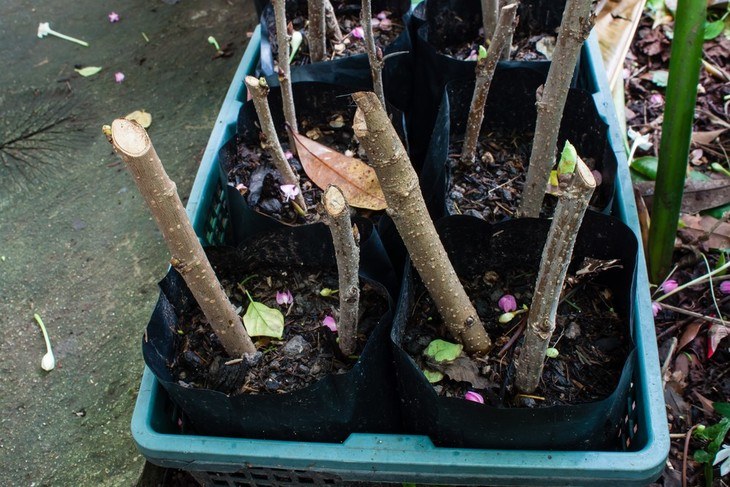
Growing roots from your cuttings is often a time-consuming and confusing process
With a rooting hormone, you can stimulate root growth for your plants, thereby significantly increasing the success rate of your plant propagation. In this article, we’re going to talk about what is rooting hormone, along with a few tips to create a homemade natural rooting hormone.
What is Homemade Root Growth Hormone?
A rooting hormone, also known as auxin hormone or phytohormone, is a combination of plant growth hormones which helps stimulate natural root formation. It helps accelerate plant growth by helping the cutting switch from green stem cell to root cell production.
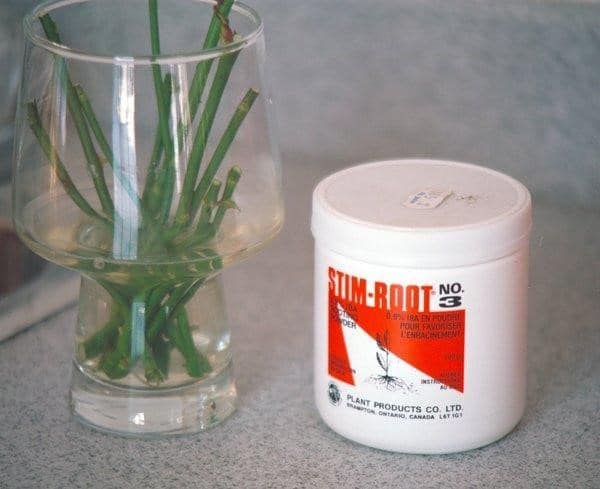
Using a root growth hormone increases the chance of a successful propagation. Source:grow.ars-informatica.ca
When you propagate several plants through stem cuttings, using an organic rooting hormone will significantly increase the chance of a successful plant rooting. Moreover, it also helps produce higher quality roots and even acts as natural protection against various types of bacteria and fungi.
Although most plants can root naturally on their own, using root growth hormones makes propagation a whole lot easier. Several plants, such as ivy, will even form their roots in water. However, these roots aren’t as strong as those that are developed through a rooting hormone.
Using this hormone might also be ideal for vertical gardens since it reduces the time it takes for plants to grow. It also helps ensure that the roots will hold firmly in the soil. Now that you have an idea about what is rooting hormone, let us discuss the various types of hormones you can use.
Various Types Of Rooting Hormones
Rooting hormones are classified into 3 different types, namely:
1. Gel Hormones
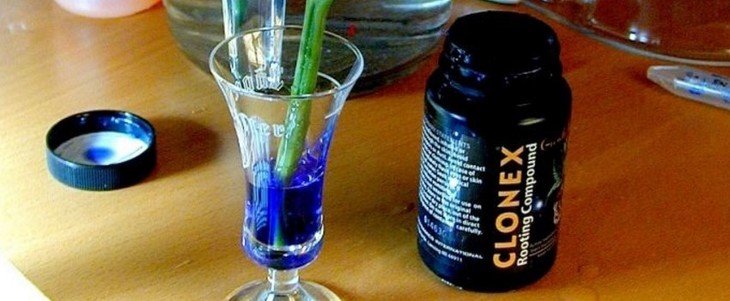
Rooting gels such as Clonex makes a convenient and quick rooting process. Source:ilovegrowingmarijuana.com
Root gels are the most popular type among the three. This is because they make a convenient rooting process possible. You simply need to place the rooting gel inside a small container then dip your cuttings in them. Since the gel will stick to your cuttings, there’s no need to do anything else. Afterwards, place your cuttings in a growing medium and wait for them to successfully grow roots.
2. Liquid Hormones
Liquid growth hormones are the most common type of rooting hormone. However, they are sold in two different formats. First is the standard-strength hormone, which you can immediately use right out of the bottle. The second is a concentrate, which you have to dilute with enough water before using.
When using a liquid rooting hormone, make sure to pour it into a separate container where you dip your plants in. This will prevent any type of diseases from contaminating your cuttings.
3. Powder Hormones
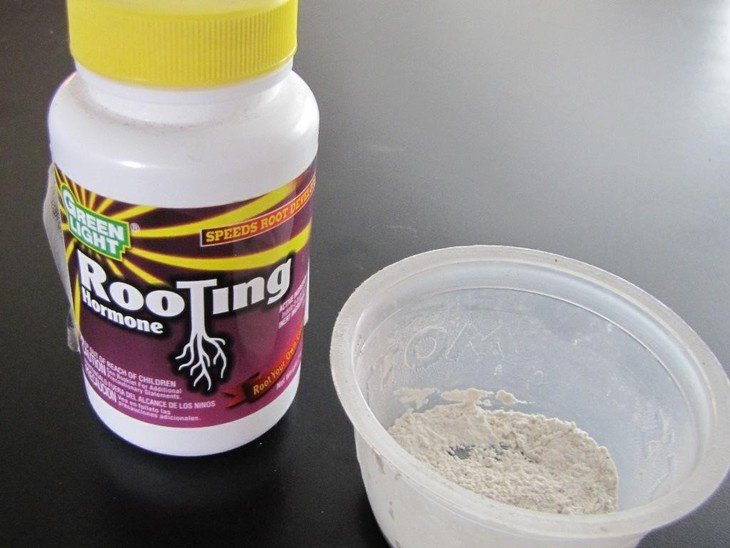
Powdered rooting hormones are longer lasting compared to other rooting hormone types. Source:viewsfromthegarden.com
If you want a rooting hormone that has a longer shelf life, you may want to go for a powdered version. In fact, a lot of gardeners and hobbyist use a powdered rooting hormone as it lasts longer than the other two.
If you choose to use a rooting powder, you need to dip your cuttings into the water first. This will make sure that the powder will stick to the cuttings and seal the cut area. Don’t forget to pour some powder into a different container to avoid contaminating your cuttings.
Making a Natural Homemade Root Growth Hormone
If you are more of a DIY person, you can instead choose to make your own rooting hormone at home. If you go the DIY route, there are three different materials you can use to create your own homemade natural root growth hormone.
1. Apple Cider Vinegar
Using apple cider vinegar to stimulate growth for plants allows your cuttings to get the extra jump start they need. It contains more than 30 trace elements, which are all beneficial for healthy plant growth. However, make sure you use only a small amount since too much will only prevent rooting (apple cider vinegar is actually a potent weed killer).
To create your own root hormone using ACV, mix one teaspoon of vinegar with 5 or 6 cups of water. You can just choose any type of apple cider vinegar available at your local supermarket. To use your homemade hormone, dip the bottom of your cuttings to the solution before you place them in your rooting medium.

When using ACV as a rooting hormone, make sure you apply only the right amount as too much will prevent rooting instead
2. Honey
Honey is yet another organic material you can use to facilitate root growth. It’s a natural fungicide and antibiotic. To create your own homemade honey rooting hormone, simply follow these steps:
Make sure to keep the solution away from light. It can be stored for up to 3 weeks in an airtight container.
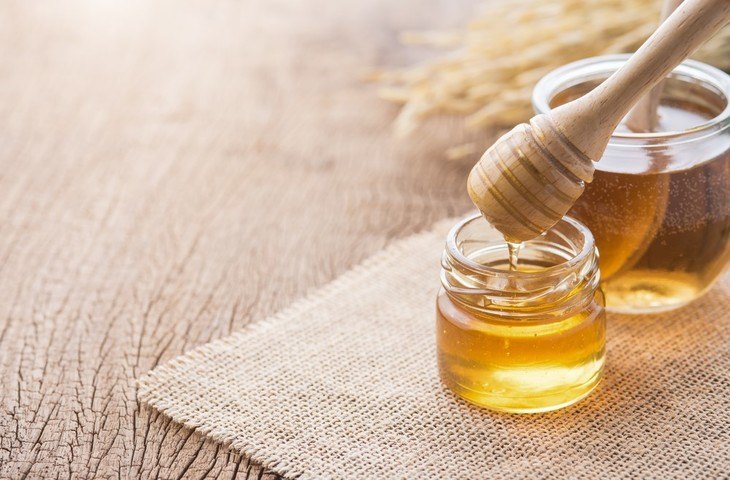
Honey is an excellent material you can use for a homemade rooting hormone
3. Willow Water
The willow tree contains two substances which enhance root growth: indolebutyric acid and salicylic acid. When absorbed by your cuttings, they help fight off bacteria, fungi, and any other infections. They also help expedite the rooting process. To create willow water as a rooting hormone, simply follow these steps:
To use the solution, simply soak your cutting into the solution in a different container.
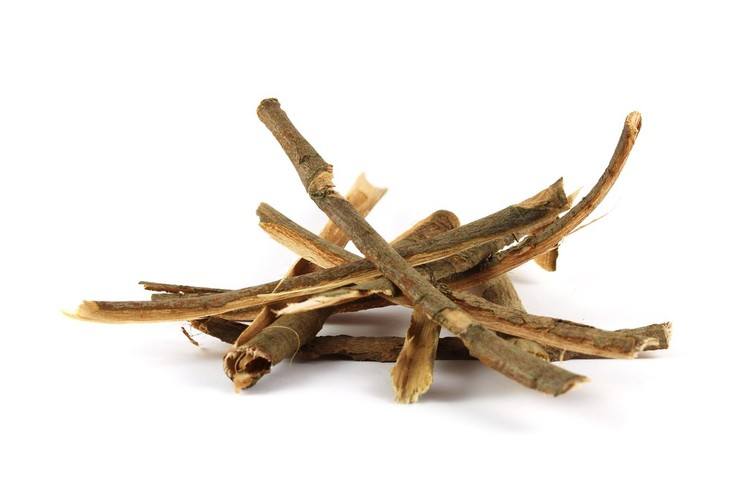
Willow water is a natural rooting hormone, which you can use for two long months
Final Thoughts
Despite the number of growth hormone products on the market, creating a DIY/ Homemade root growth hormone will give you an affordable and healthy alternative.
Pin it!
